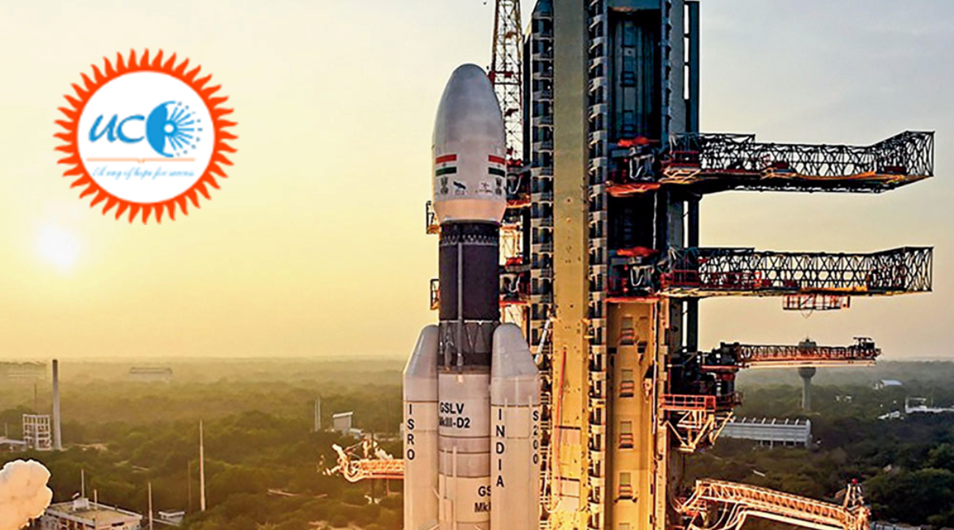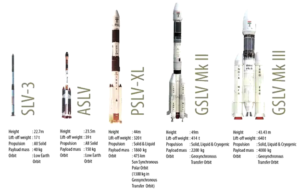ISRO’s Next-Gen Launch Vehicle
Why in News?
Indian Space Research Organisation (ISRO) is developing a Next-Gen Launch Vehicle (NGLV) to replace operational systems like the Polar Satellite Launch Vehicle (PSLV).
- Launch Vehicles are used to carry spacecraft to space. India has two operational launchers, PSLV and Geosynchronous Satellite Launch Vehicle (GSLV).
What is NextGen Launch Vehicle?
- About:
- In NGLV, ISRO is looking at a cost-efficient, three-stage to orbit, reusable heavy-lift vehicle with a payload capability of ten tonnes to Geostationary Transfer Orbit (GTO).
- Its robust design allows bulk manufacturing, modularity in systems, sub-systems and stages and minimal turnaround time.
- Features: It will feature semi-cryogenic propulsion (refined kerosene as fuel with liquid oxygen (LOX) as oxidiser) for the booster stages.
- Use: Potential uses will be in launching communication satellites, deep space missions, future human spaceflight and cargo missions.
What are other Launch Vehicles Developed by ISRO?
- Satellite Launch Vehicle (SLV): The first rocket developed by ISRO was simply called SLV, or Satellite Launch Vehicle.
- It was followed by the Augmented Satellite Launch Vehicle or ASLV.
- Augmented Satellite Launch Vehicle (ASLV): SLV and ASLV both could carry small satellites, weighing up to 150 kg, to lower earth orbits.
- ASLV operated till the early 1990s before PSLV came on the scene.
- Polar Satellite Launch Vehicle (PSLV): PSLV’s first launch was in 1994, and it has been ISRO’s main rocket ever since. Today’s PSLV, however, is vastly improved and several times more powerful than the ones used in the 1990s.
- It is the first Indian launch vehicle to be equipped with liquid stages.
- PSLV is the most reliable rocket used by ISRO to date, with 52 of its 54 flights being successful.
- It successfully launched two spacecraft – Chandrayaan-1 in 2008 and Mars Orbiter Spacecraft in 2013 – that later travelled to Moon and Mars respectively.
- Geosynchronous Satellite Launch Vehicle (GSLV): GSLV is a much more powerful rocket, meant to carry heavier satellites much deeper into space. To date, GSLV rockets have carried out 18 missions, of which four ended in failure.
- It can take 10,000 kg of satellites to lower the earth’s orbits.
- The indigenously developed Cryogenic Upper Stage (CUS), forms the third stage of GSLV Mk II.
- Mk-III versions have made ISRO entirely self-sufficient in launching its satellites.
-
- Before this, it used to depend on the European Arianne launch vehicle to take its heavier satellites into space.
-
UPSC Civil Services Examination Previous Year Question (PYQ)
Prelims
Q: With reference to India’s satellite launch vehicles, consider the following statements: (2018)
- PSLVs launch the satellites useful for Earth resources monitoring whereas GSLVs are designed mainly to launch communication satellites.
- Satellites launched by PSLV appear to remain permanently fixed in the same position in the sky, as viewed from a particular location on Earth.
- GSLV Mk III is a four-staged launch vehicle with the first and third stages using solid rocket motors; and the second and fourth stages using liquid rocket engines.
Which of the statements given above is/are correct?
(a) 1 only
(b) 2 and 3
(c) 1 and 2
(d) 3 only
Ans: (a)







